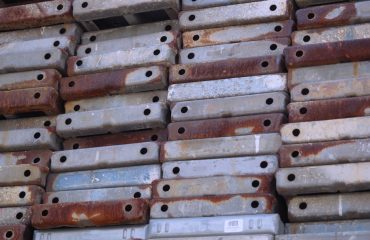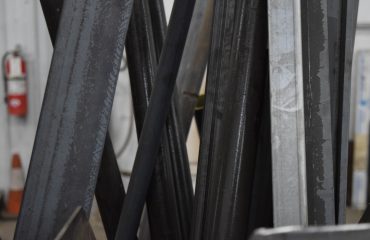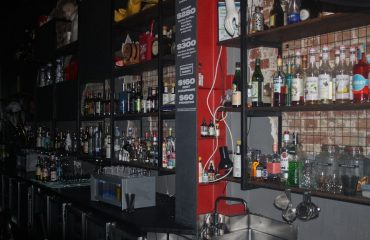Steel pipes are ubiquitous in construction, infrastructure, and various industries. Understanding the different manufacturing processes is crucial for selecting the right pipe for a specific application. Two primary methods stand out: hot-finishing and heat-treating. While both involve heat, they achieve different results, impacting the pipe’s properties and suitability for diverse projects. This comprehensive guide delves into the intricacies of hot-finished and heat-treated pipes, clarifying their differences and applications.
1. The Hot-Finishing Process: Shaping Steel at High Temperatures
Hot-finishing is a primary steel pipe manufacturing process involving rolling a heated steel billet or bloom into a seamless or welded pipe. The high temperature (typically above the steel’s recrystallization temperature) allows for significant plastic deformation, making the process efficient and cost-effective. The heated steel is passed through a series of rollers, progressively reducing its diameter and forming the cylindrical shape. This process results in a pipe with a relatively coarse grain structure. After rolling, the pipe undergoes straightening, cutting to length, and potentially other finishing operations, such as beveling or threading.
Advantages of Hot-Finished Pipes:
- High production rate and cost-effectiveness.
- Suitable for large-diameter pipes.
- Good strength and ductility for general applications.
Disadvantages of Hot-Finished Pipes:
- Potentially lower yield strength and tensile strength compared to heat-treated pipes.
- Surface finish may be less precise.
- Not ideal for applications requiring high strength or specific mechanical properties.
2. Heat-Treating: Enhancing the Properties of Steel Pipes
Heat-treating is a secondary process applied to enhance the mechanical properties of steel pipes, often starting with hot-finished pipes. It involves carefully controlled heating and cooling cycles to modify the microstructure of the steel, thereby altering its strength, hardness, toughness, and ductility. Common heat treatments include annealing, normalizing, quenching, and tempering. Each treatment aims to achieve specific properties depending on the intended application.
Different Heat Treatment Methods and Their Effects:
- Annealing: Reduces internal stresses and improves ductility.
- Normalizing: Refines the grain structure and improves mechanical properties.
- Quenching: Rapid cooling to increase hardness and strength.
- Tempering: A controlled heating after quenching to reduce brittleness and improve toughness.
3. Comparing Mechanical Properties: Strength, Ductility, and Toughness
The key difference between hot-finished and heat-treated pipes lies in their mechanical properties. Hot-finished pipes generally exhibit good ductility (ability to deform without breaking) and moderate strength. Heat-treated pipes, particularly those quenched and tempered, possess significantly higher yield strength, tensile strength, and hardness, but may have reduced ductility compared to their hot-finished counterparts. The choice depends on the application’s demands. High-pressure applications might necessitate the enhanced strength of heat-treated pipes, while applications requiring flexibility might favor hot-finished pipes.
4. Applications of Hot-Finished and Heat-Treated Pipes
Hot-finished pipes are commonly used in applications where high strength isn’t paramount, such as:
- Water and sewage pipelines.
- General construction frameworks.
- Low-pressure fluid conveyance.
- Agricultural irrigation systems.
Heat-treated pipes, on the other hand, find their niche in demanding applications requiring superior mechanical properties:
- High-pressure pipelines (oil and gas).
- Pressure vessels.
- Structural components in heavy machinery.
- Applications requiring high impact resistance.
5. Choosing the Right Pipe: Factors to Consider
Selecting the appropriate pipe type depends on several factors:
- Intended application: What is the pipe’s purpose (e.g., carrying high-pressure fluid, supporting structural loads)?
- Required mechanical properties: What levels of strength, ductility, and toughness are necessary?
- Budget: Heat-treated pipes typically cost more due to the additional processing.
- Environmental conditions: Will the pipe be exposed to harsh weather or corrosive substances?
- Industry standards and regulations: Adherence to relevant codes and standards is crucial for safety and compliance.
Consulting with a qualified engineer or pipe supplier is recommended to ensure the correct pipe is chosen for your specific project requirements.
In conclusion, understanding the differences between hot-finished and heat-treated pipes is vital for successful project execution. While hot-finishing provides cost-effective solutions for general applications, heat-treating unlocks superior mechanical properties for demanding situations. Careful consideration of the application’s demands and the pipe’s properties will lead to the optimal choice.
Tags: hot-finished pipes, heat-treated pipes, steel pipe manufacturing, pipe properties, steel pipe applications




